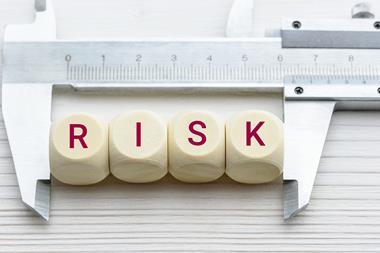Risks elevate in 19 countries, according to Aon’s political risks map
While the world economy is broadly on the road to recovery, the level of political risk has risen in more countries than it has declined, according to Aon’s latest political risk map.
“We believe that political risk will remain elevated while the markets are unstable, but will return to traditional levels as the world economy improves,” said Beverley Marsden, associate director of Aon Risk Solutions’ Crisis Management team.
Aon measured political risks in 211 countries ranking them from low risk to very high risk. Nineteen countries were downgraded on the 2011 map, while 11 countries were upgraded.
Marsden explained: “The perceived or actual risk of sovereign non-payment continues to be an issue in countries across the globe. For example, we have seen thirteen island nations move into a higher risk category this year because of the effect of a decline in tourism on their economy.
“The negative effects of the global financial crisis impacted the economies of nations with traditionally low levels of risk. Iceland this year became the first Western European country to be downgraded to Medium.
Marsden continued: “There is good news too; over the past five years, the Aon Political Risk Map has seen a nearly 30% percent increase in the number of countries in the middle of the risk rankings - the Medium Low to Medium High categories - as these countries have become more active in the world economy and their prosperity has increased.
“Globalisation has been blamed for recent incidents of economic volatility, but it has also had a positive impact on global political and economic stability. Many countries previously designated as Medium High or High have taken advantage of global trade links and have seen political risk levels decrease. This trend is demonstrated in South America, where countries like Brazil, Colombia and Mexico have all seen sustained improvements over the last five years.
What are the risks?
What are the risks?
War/Civil War
The 2011 map shows five additional countries with a significant level of the risk of war, civil war, or insurrection breaking out, an increase from 29 in 2010 to 34 this year. These countries include Madagascar, Niger, Venezuela, Kyrgyzstan and Thailand.
Exchange Transfer
This icon denotes the possibility of being unable to make payment in contract currency due to the imposition of local currency controls and/or the possibility of being unable to transfer currency outside the host country. Twelve new countries attract this icon on the 2011 map: Algeria, Burkina Faso, Central African Republic, Chad, Guinea Bissau, Guinea Conakry, Madagascar, Niger, Afghanistan, Montenegro, Lithuania and Macedonia. Taking into account the five countries that no longer attract this icon, the total number of countries with this icon has risen from 69 in 2010 to 76 in 2011.
Sabotage, Riot, Civil Commotion and Terrorism
Eleven new countries face a significant enough level of this risk to warrant an official icon on the map, up from 100 on 2010's map to 111 in 2011. Additions to this list include Angola, Chad, Belize, Austria and Bahrain.
Sovereign Non-payment
While the number of countries attracting this icon has remained fairly stable, rising from 87 nations in 2010 to 88 this year, many of this year's downgrades are due to this risk. Twelve island nations, including Antigua and Barbuda, Barbados, Bermuda, the Cayman Islands, Comoros, Dominica, Greenland, Antilles, St Lucia and St Kitts and Nevis have all been downgraded due to tighter credit conditions which could lead to an increase in sovereign non-payment risk.
Legal and Regulatory Risk
An additional 10 countries attract this icon, bringing the total number of nations with this icon to 104 in 2011. As previously mentioned, some African nations, including Madagascar, Malawi and Uganda, have been added to this category because of increased levels of trade, as opposed to any specific change in risk profile. Additional countries joining this list in 2011 include Vietnam, Bulgaria and Saudi Arabia.
Political Interference
The 2011 map shows a marginal increase in the number of countries with a risk of investors losing their assets due to expropriation or nationalisation by the host government. The increase from 85 in 2010 to 88 in 2011 includes countries such as Afghanistan, Benin and Zambia.
Downloads
Or download the Risk Map PDF here
PDF, Size 1.81 mb



















